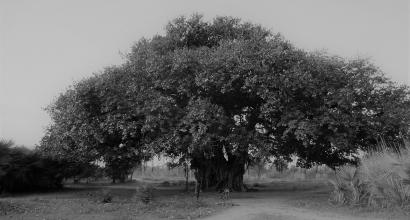In the dharmashastras, there are sections exclusively dedicated to raja-dharma that are both specific and elaborate. In the smrtis of Manu, Yajnavalkya, Narada and others, as well as the dharma-sutras of Apastamba, Bodhayana, Gautama and others, there are thousands of pages dedicated to raja-dharma. All those deal with how governance should be in a manner that is transparent and is in the best interests of the people, which are aligned to the fundamental principles of sanatana dharma. The values of good culture and universal welfare have been the life-essence of our awareness of kshaatra. Since the present book aims to give a historical overview of the tradition of kshaatra in India, the various details discussed extensively in the dharmashastras are beyond the scope of this work. Those interested can read through works like P V Kane’s History of Dharmaśāstra.
To observe the vision/worldview of rajadharma in the Indian tradition of kshaatra, let us consider a few examples from our texts on dharma and artha:
दुष्टस्य दण्डः सुजनस्य पूजा
न्यायेन कोशस्य च सम्प्रवृद्धिः |
अपक्षपातो’र्थिषु राष्ट्ररक्षा
पञ्चैव यज्ञाः कथिक नृपाणाम् ||
– अत्रिस्मृति ३
"Punishment for the wicked, adoration for the good-natured
Growth and prosperity gained on the path of justice
Unbiased judgement of people’s desires and questions
Protection of the land –
These duties are the five great yajnas for a king"
(Atrismṛti 3)
(Vishnudharmottara 3.323.25-26 is similar in meaning: दुष्टदण्डः सतां पूजा धर्मेण च धनार्जनम्| राष्ट्ररक्षा समत्वं च व्यवहारेषु पञ्चकम्| भूमिपानां महायज्ञाः सर्वकल्मषनाशनाः||)
राज्ञो हि व्रतमुत्थानं यज्ञः कार्यानुशासनम् |
दक्षिणा वृत्तिसाम्यं च दीक्षितस्याभिषेचनम् ||
प्रजा सुखे सुखं राज्ञः प्रजानां च हिते हितम् |
नात्मप्रियं हितं राज्ञः प्रजानां तु प्रियं हितम् ||
– अर्थशास्त्र १.१९-२०
"To be always awake is the king’s vrata
To skilfully carry out his duties is the king’s yajna
To give the right salaries and benefits to his staff and to people
is the dakshina offered by the king
In the joy of his people is his joy,
In the welfare of his people is his welfare
Welfare is not personal welfare of the king
But the welfare of all his subjects"
(Arthashastra 1.19-20)
सर्वो दण्डजितो लोको दुर्लभो हि शुचिर्नरः |
दण्डस्य हि भयात्सर्वं जगद्भोगाय कल्पते ||
– मनुस्मृति ७.२२
"The whole world is kept in order because people fear punishment; it is not easy to find a pure man. It is because of law and order that people abstain from mindless indulgence."
(Manusmrti 7.22)
दण्डो हि सुमहत्तेजो दुर्धरश्चाकृतात्मभिः |
धर्माद्विचलितं हन्ति नृपमेव सबान्धवम् ||
– मनुस्मृति ७.२८
"But if the king misuses this power to punish (the power of alertness and compassion which arises from strength, authority, and courage) then the laws, rules, comforts, and prosperity of a nation is destroyed and the king along with his family and friends goes to ruin."
(Manusmrti 7.28)
Several principles of dharma such as the ones mentioned above have laid the foundation for the awareness of kshaatra in the Indian tradition. When we see these injunctions, we realize how magnanimous, brave, and majestic our nation’s raja-dharma was.
In our dharmashastras, of the four sections of आचार, प्रायश्चित्त, व्यवहार, and दण्ड, the first two – achara and prayashchitta – are subordinate to braahma, while the last two – vyavahara and danda – are subordinate to kshaatra. The king is the greatest authority and the emperor of the kingdom. Whenever there is an issue related to the dharmashastras, in the committee that is set up to deliberate on the matter and solve the issue, one of the members has to be a kshatriya – this has been made clear by the shastrakaras. In our tradition, the honor of madhuparka is special. This is a simple and symbolic honor. It is offered to shrotriyas, acharyas, aptabandhus, paramahamsa-parivrajaka sanyasis, and snatakas. The king too is worthy of being honored thus, it is said. Madhuparka doesn’t involve expensive items; it is just an honoring of the guest. [Madhuparka is the practice of offering honey to honor a distinguished guest. According to Yajnavalkyasmrti 1.110, six kinds of people are offered madhuparka – a priest (ऋत्विक्), a teacher (आचार्य), bridegroom, king, graduate (स्नातक), and someone dear to the host. Baudhayana Grhyasutra 1.2.65 adds ‘guest’ (अतिथि) to this list. As part of madhuparka, honey, curds, ghee, water, and grains were offered while meat was optional; see Ashvalayana Grhyasutra 1.22.5-26 for details.]
The king has always received such social honors over the centuries. It is perhaps because of such practices that we developed a tradition of honoring and respecting those who embody kshaatra. The king would protect the kingdom. This naturally led to the establishment of both peace and prosperity. Even today, we see many surnames that are associated with our kshaatra tradition – Gowda, Gaundar, Rayadu, Naidu, Reddy, Mudaliar, etc. There are many surnames that are names of weapons or those dependent on weapons – Katiyar, Talvar, Rana, Nayak, Rathore, Chauhan, Simha (Singh), etc. Even the Jats are possibly a warrior group. The general surname for all kshatriyas has been designated as ‘varma,’ meaning ‘armor.’ Giving such a name aspires for a kshatriya to become an armor for the entire society. Today’s pseudo-secular leadership is pushing all of them into Other Backward Communities (OBCs); this is a grave danger.
Translated from Kannada by Hari Ravikumar
(Translator’s notes in square brackets.)

















































